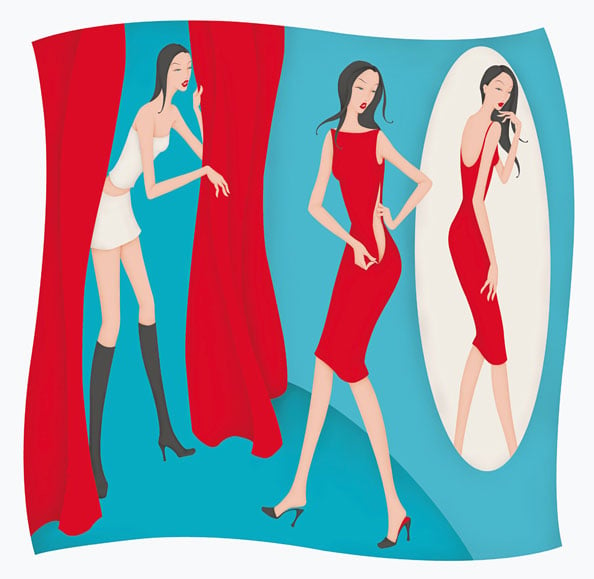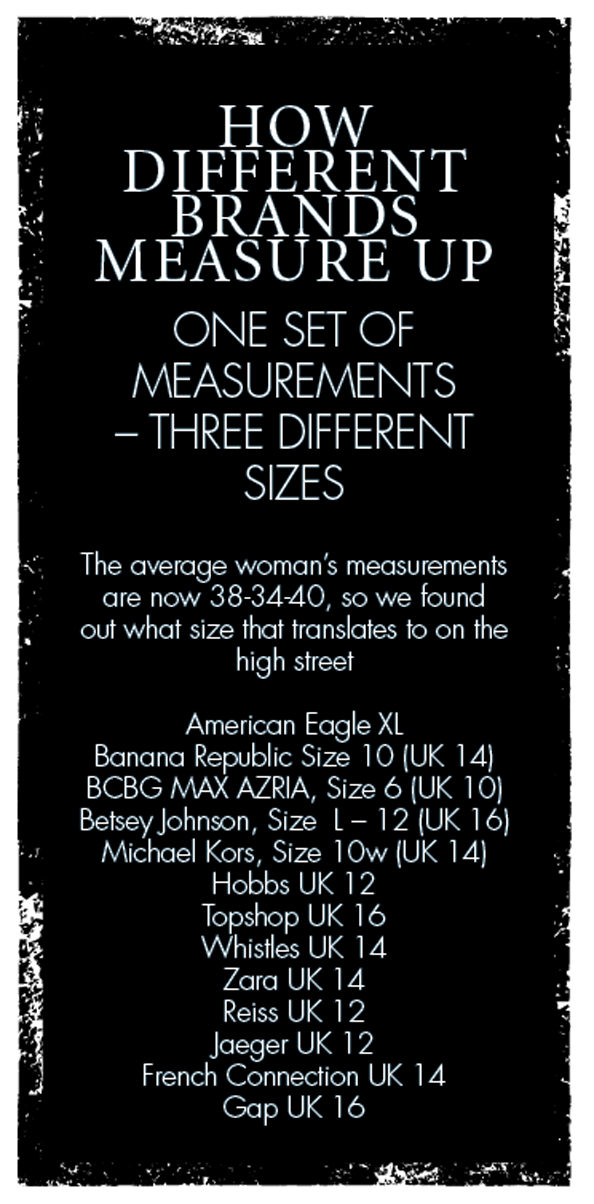Labels are everything in fashion, but in the age of vanity sizing, can we really trust what it says on the tag? Emirates Woman reports. From hip style mavens to your mum, there is one label that every woman pays attention to: the size label on her dress. There is nothing like the shopping horror when your regular size is just a little too snug, or the delight when you are able to slip into a size down from your usual fit. But despite the emotional power that that little number can wield, the reality is that your true size can vary drastically from brand to brand.
There is currently no law with regards to sizing labels on clothes, just common standards, which means that a size 10 in one store, could be equivalent to a size 12 in another, and even a size 14 in a third. Adding to the confusion is the fact that different countries have different sizing too – for example a US size 10 is actually a UK size 14, then there’s the stores which use S, M and L to consider… is it any wonder women are left scratching their heads in shop changing rooms?
Assel Elle Zadina, a model and fashion marketing student at the London College of Fashion explains why sizes vary so much from brand to brand. “All branding and marketing is image based. Every brand has the ‘fitting model’ –the body of the house, on which designs are created, fitted and then sent to production,” she explains. A luxury brand like Chanel, for example, is catered to an ideal of a petite, French women from the 40s, so their sizing is notoriously small, while American high street brands, such as Gap and Banana Republic are catering for the US mass market and so their measurements come in slightly bigger. Additionally, sizes at younger brands like Topshop come in smaller than those aimed at an older demographic such as Hobbs.
“It often depends on what age group the brand is catering for. Younger audience will have smaller sizing guidelines,” adds Assel. There is also the issue of ‘vanity sizing’ – when clothes manufacturers adjust the sizing on their garments to cater to increasing standard body sizes. Sixty years ago, the average woman had the classic hour-glass figure with measurements of 37-27-39, today she measures 38-34-40. Aware that no woman wants to buy a size bigger, many brands have responded by tinkering with their sizes accordingly. Hannah Jean, an Image Consultant & Stylist (findmystyle.com) explains: “Vanity sizing is a social construct that has only been coined in the last ten years and typically is talked about in relation to the last fifty years of fashion. If you look back, you can see a gradual change decade by decade, so a woman who wears a modern UK size 10 would have been a size 12 in the 1980s, a 14 in the 1970s and a 16 to 18 in clothing in the 1950s.”
Last year, Dame Sally Davies, the Chief Medical Officer for England, criticised such practices, saying that being overweight had become ‘normalised’. However, Hannah says it’s simply the fashion industry reacting to socio-economic changes. “Our bodies have changed shape over the last 50 years, we are on average two inches taller, 7lbs heavier and our feet have gone up three sizes. Normalising bigger clothing sizes is more a case of catering for market demand, and recognising that people’s body shapes are not static but that they change with time. The principle behind vanity sizing – the fact that body structure is consistently evolving and many older sizing systems are based on outdated data – means that retailers have to evolve in order to remain current.”
And it certainly seems as though curves are here to stay: Ashley Graham became the first plus size model to pose for Sports Illustrated swimwear issue earlier this year, while plus size retailer Evans had their first catwalk show last September. However, we’ll have to wait and see if the fuller figures seen on the high street will permeate the mainstream catwalks. After all, every major fashion brand imposes strict rules when it comes to the measurements of their models, and those vital inches vary from brand to brand. To walk the Victoria’s Secret catwalk for example, you must be at least 5ft 9ins with body measurements of 34-24-34, while Chanel’s Karl Lagerfeld – who famously said “no one wants to see curvy women’ – prefers waif-life teen models. But the catwalk is changing, insists Hannah, and its gearing up to embrace fuller figures.
“This is part of a wider trend in the industry. Myla Dalbesio who featured in Calvin Klein’s campaign for November 2014 is a particularly prominent example of brands responding to the public’s increasingly loud calls to see more ‘normal’ women in advertising. In 2012, Ralph Lauren worked with Robyn Lawley, a UK size 12, dubbed the “queen of the inbetweenies” by the blog Style Has No Size and H&M used Jennie Runk, also a 12, in a campaign for plus-size swimwear the same year. Change is coming and it is here to stay thankfully.”
Meet the plus sized blogger we can’t get enough of, here.
How Different Brands Measure Up
Words: Aoife Stuart-Madge
Image: Getty














